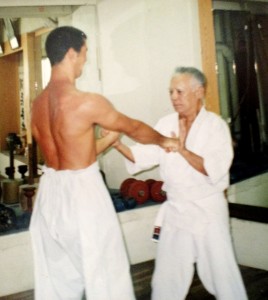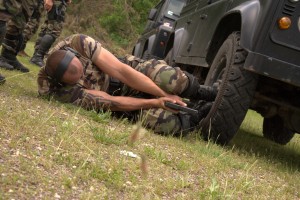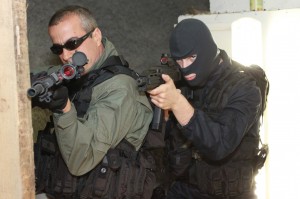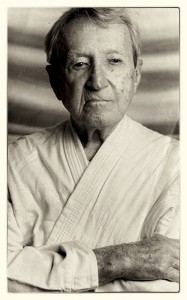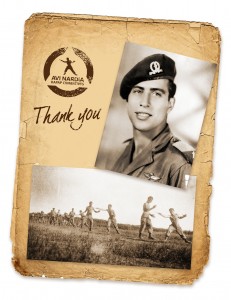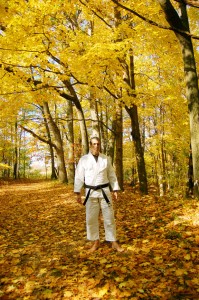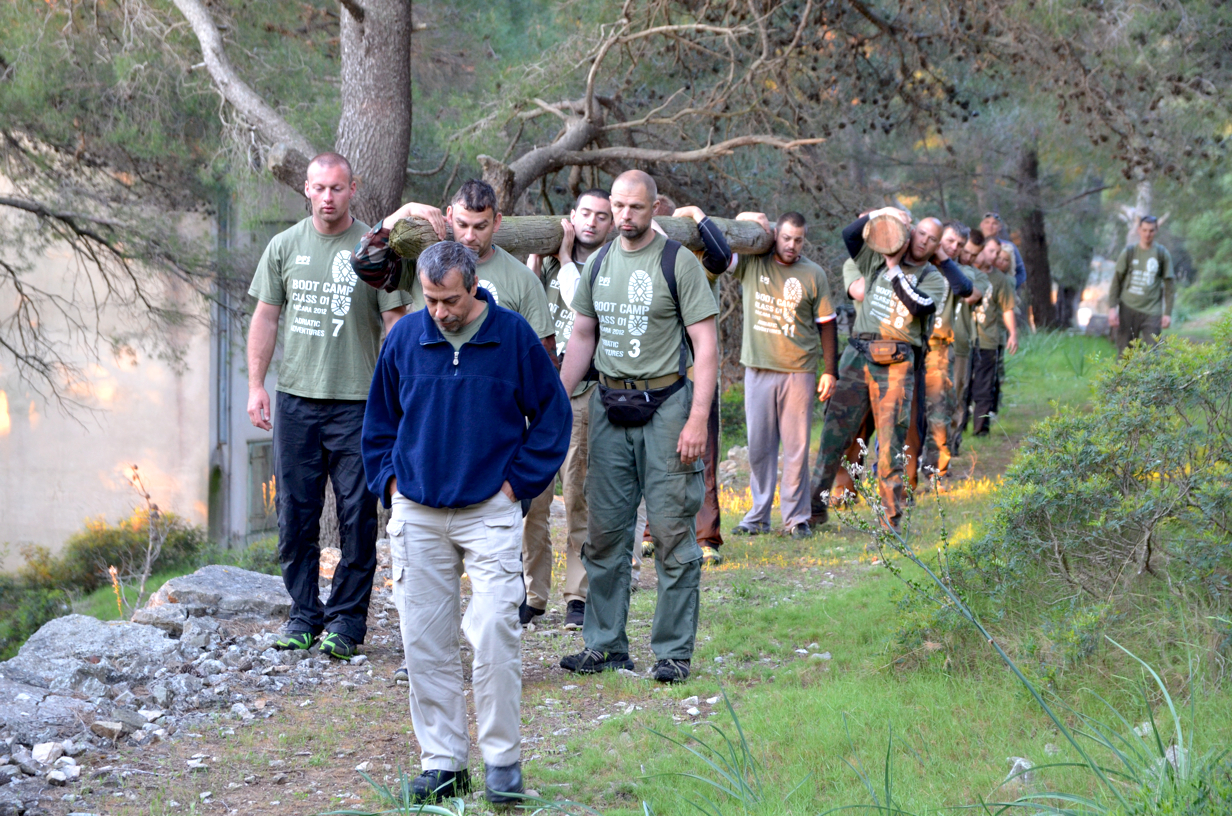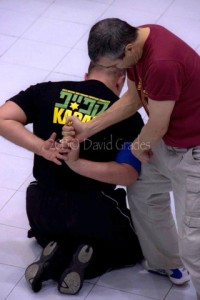“The Most Difficult Journey Is The One You Must Make Within Yourself…”
– Hanshi Patrick McCarthy
Copyright © 2013 Avi Nardia with Tim Boehlert
Just a few years ago a group of Krav Maga practitioner’s tried to gain market-share with the only skill they knew, slander. They tried to character assassinate me using lies and nonsensical claims. Using a few guys that I had removed from KAPAP: One was a war criminal, and once I found out, he was out. One was kicked out of the Israeli Army for being AWOL and shameful and I also refused to allow him to test to get in YAMAM unit. One was an Ex-YAMAM member that tried to become an instructor, but wasn’t good enough, and instead the YAMAM unit took me as it’s Instructor. One guy was discharged from the Israeli Army with Mental Health issues after just 3 weeks of service. He claimed to have training from the Israeli Secret Service, but in reality he was merely trained by a guy that was once a military driver. The second was an Air Force technician and the last hardly served in the Army having the lowest IDF military profile 31, which meant that one more point down and he would be out of the Military. Yet this ‘great team’ managed with real Kapap that popped up after 15 years, to claim there was no Kapap, but since Kapap had gained popularity, now all Krav Maga best sellers were becoming KAPAP. This ‘team’ claimed that Kapap was the YAMAM system, but they forgot that I instituted it and set it in YAMAM with Lt. Colonel Chaim Peer. This ‘team’ united with a pedophile that was convicted 6 times in Israeli court for raping his students. But ‘now’ they are the ‘real-deal’!
One day my kid came home from school and asked me why in school when they ran a Google search on my name, it popped up that I was a fraud! This was one of the most disturbing moments of my life. How can evil win? These criminals were even using the power of the internet and internet forums to try and set bad names and slander on my father RIP. That was when I decided to fight back.
My father taught me lots of things, but the first and most important was respect. What’s the meaning of respect? My father never spoke of his past, of wars even though he’d been in 5 wars and was one of only a select few men that can wear the dress Red Wings in Israel! I asked my father just two weeks before he died to talk to me about his past, but he said “we did what we had to do, not for reward, but we defended what we believed in, and our country, and for what we built and our families and nothing more.”
My father lost his two parents when he was 11 years old. He moved to live in Israel and did not have an easy life. I remember as I visited and then lived in Japan that my father would go to work at 5am, and on a cold day I just understood what he’d said many years ago to me: “I may have hard work but I will manage to send you to the best schools and get the best education so you can have successes in life.” I owe him my successes for sure, as I also became an officer in the Army even though I wasn’t interested in it, but he pushed me hard to choose the good ways in life.
After my father died I understood how many people loved him and respected him and then understood how ‘rich’ he was. In this article I’ll try to share some ideas as to why I continue to ignore evil and push it away. Evil people and my enemies: enemies are never my friends as bad people are just bad people. This opened my eyes to study more. As hard as the slander has been it’s taught me a lot and made me a better person. I can also say that it has shown me a lot about my friends, as Martin Luther King said “In the End, we will remember not the words of our enemies, but the silence of our friends.” And yes, my friends kept silent as many would like to be taller by stepping on others.
I try my best to teach with love and peace, keeping ego away as in Machado BJJ there is a great quote: “leave your ego at the door when you enter this dojo.” I’m old school. I try to instill in people good values and good morals and good education, not just skills of physical techniques, and in my school there will be no bullying or egotistical martial art. That brings me to a nice read to share with you by Hanshi Patrick McCarthy:
“People will forget what you said.
People will forget what you did, but
People will never forget how you made them feel.”
I dreamt I had an interview with God. “Come in” God said. “So, you would like to interview Me?” “If you have the time” I said. God smiled and said: “My time is eternity and is enough to do everything; what questions do you have in mind to ask me?” “What surprises you most about mankind?” God answered: “That they get bored of being children, are in a rush to grow up, and then long to be children again. That they lose their health to make money and then lose their money to restore their health. That by thinking anxiously about the future, they forget the present, such that they live neither for the present nor the future. That they live as if they will never die, and they die as if they had never lived…”
God’s hands took mine and we were silent for awhile and then I asked, “As a parent, what are some of life’s lessons you want your children to learn?” God replied with a smile:
“To learn that they cannot make anyone love them. What they can do is to let themselves be loved.
To learn that what is most valuable is not what they have in their lives, but who they have in their lives.
To learn that it is not good to compare themselves to others. All will be judged individually on their own merits, not as a group on a comparison basis!
To learn that a rich person is not the one who has the most, but is one who needs the least.
To learn that it only takes a few seconds to open profound wounds in persons we love, and that it takes many years to heal them.
To learn to forgive by practicing forgiveness.
To learn that there are persons that love them dearly, but simply do not know how to express or show their feelings.
To learn that money can buy everything but happiness.
To learn that two people can look at the same thing and see it totally differently.
To learn that a true friend is someone who knows everything about them… and likes them anyway.
To learn that it is not always enough that they be forgiven by others, but that they have to forgive themselves.”
I sat there for awhile enjoying the moment. I thanked Him for his time and for all that He has done for me and my family, and He replied, “Anytime. I’m here 24 hours a day. All you have to do is ask for me, and I’ll answer.”
“People will forget what you said.
People will forget what you did, but
People will never forget how you made them feel.”
I try to get my students to journey more inside themselves and not so much into others – “The Most Difficult journey is the one you must make within yourself…”
In the last several years I have travelled almost non -stop to teach KAPAP and today we have KAPAP world-wide from near the North Pole to the Antarctica and all around the world.
I didn’t target rich people, as I have no interest in the rich ladies of Beverly Hills fighting in their tight pants “doing the fierce Israeli Army system.”
I want to teach communities and poor people and to give people something more in martial arts that’s not about showing off. And that has gotten me into becoming ‘Sensei on the Road’ – and where the road ends, the adventure begins.
I’ve started to teach native tribes and travel into real-life communities teaching, but I find myself mostly studying and looking into myself. I’ve studied that when you see the tribe leader living with his village and when his village is floating, his home is floating too. That shows me that our way of life, with our leaders living in golden temples, is far from us…
Teaching martial arts make me wonder many times about life, as martial arts is the study of life – where most real Grand Masters are at best fools. If they had really been smart they would have found something better to do and more profitable.
What is teaching?
All GREAT teaching comes from the heart – there are no words for it. Finding words to explain the ‘Do’ – way is like throwing stones at the moon.
In the last few months I’ve been teaching in a new project for Native Indians from the Cree and Inuit tribes and have also started a great study myself about life and visions of life from their perspective.
When I was a kid I always loved cowboy movies, but I was always on the side of the Indians. The older I got, the more I understood why. I could feel their spirit, and it spoke to me more truly than western money ideas and perspectives of life. Here are some inspirational quotes that I’ve found
that we can all learn from, provided by Native Indian Tribes – that are
still valid today, and which are new inspiration and guide posts for me,
and hopefully for you as well.
“I am poor and naked, but I am the Chief of the nation. We do not want riches but we do want to train our children right. Riches would do us no good. We could not take them with us to the other world. We do not want riches. We want peace and love.” Red Cloud
“Only after the last tree has been cut down. Only after the last river has been poisoned. Only after the last fish has been caught. Only then will you find that money cannot be eaten.” Cree Indian Prophecy
“Our first teacher is our own heart.” Native American proverb
“When the blood in your veins return to the sea, and the earth in your bones return to the ground, perhaps then you will remember that this land does not belong to you, it is you who belong to this land.” – Unknown
“Treat the earth well: it was not given to you by your parents, it was loaned to you by your children. We do not inherit the Earth from our Ancestors, we borrow it from our Children.” Ancient American Indian proverb
“Certain things catch your eye, But pursue only those that capture your heart.” Old Indian saying
“When you were born, you cried and the world rejoiced. Live your life so that when you die, the world cries and you rejoice.” Cherokee expression
“Lose your temper and you lose a friend; lie and you lose yourself.” Hopi
“We must protect the forests for our children, grandchildren and children yet to be born. We must protect the forests for those who can’t speak for themselves such as the birds, animals, fish and trees.” Qwatsinas, Nuxalk Nation
Here is an outline and Mission statement that I provided to present my program:
Project Mission Statement:
“Through this project children will develop healthy attitudes and social skills through targeted physical activity in interaction with peers. Through the success of the process of mastering different skills and activities which are included in this project children will develop self-confidence and build a positive image of themselves and their environment. Sports and physical activity greatly decreases the degree of aggressiveness, i.e. to divert it through creative engagement in physical exercise. In developing this project, the focus was the current situation of the society and of all the problems facing today’s society, families and young people, such as alienation, violence in the family and among peers, the impact of media pressure and the internet, enjoying the opiates… In order to achieve objective and realistic knowledge children need to be trained. With this project of martial arts we want to form a strategy that will help children and young people in the wider understanding of their environment and their place and role in the family and society. Young people at this age are not mature enough to understand the issues and they can still be affected in a positive way to social values. One solution would be to promote and popularize sports and we believe that the School of Martial Arts was one of the ways to promote human values and increase the level of sporting aspirations in young population.
The objectives to be achieved by the implementation of the proposed project:
The project aims to introduce sports and Martial Arts to students in elementary and secondary schools, so that their interest directs towards activities that help them achieve better living conditions, promote mental and physical development. Practicing sports in adolescence contribute to the prevention of violence and drug abuse and create awareness among youth about the value system.
Informal education project activities :
Within the project and in addition to sports activities it will be worked on the role of sport in the wider context of the development of interpersonal relationships and communication. Through various forms of sporting activities, in addition to physical education, students develop general sportsmanship affirmation and positive learning attitudes and positive life values such as developing trust among people, identifying and resolving miscommunication and misunderstandings, as well as a positive view of diversity and tolerance. Developing trust between people is essential for mutual respect, open minds, understanding and empathy. You can thus promote the development of communication skills and team cooperation and positive appreciation of diversity. The achievement of the trust, communication, competence and tolerance enables easier development of personality, behavior modification, and prevention of potential conflicts within the family and society.
The goal of informal and educational activities :
Raising awareness of social perception, i.e. awareness that the accuracy of the observations of others depends on the precision with which we highlight (collect, perceive) certain information (verbal and nonverbal.) This experiential knowledge improves the personal observations and increase confidence in interpersonal communication situations. The project aims to converge youth sports to their interest directed towards activities that allow them to better living conditions, promote mental and physical development, and further information and encouragement that takes part in the development of the same.
“Knowing yourself is the beginning of all wisdom.” Aristotle
“Know yourself and you win all battles.” Sun Tzu
Maj. Avi Nardia www.avinardia.com
Tim Boehlert www.defendublog.com
©Copyright, 2013 Maj. Avi Nardia & Tim Boehlert

